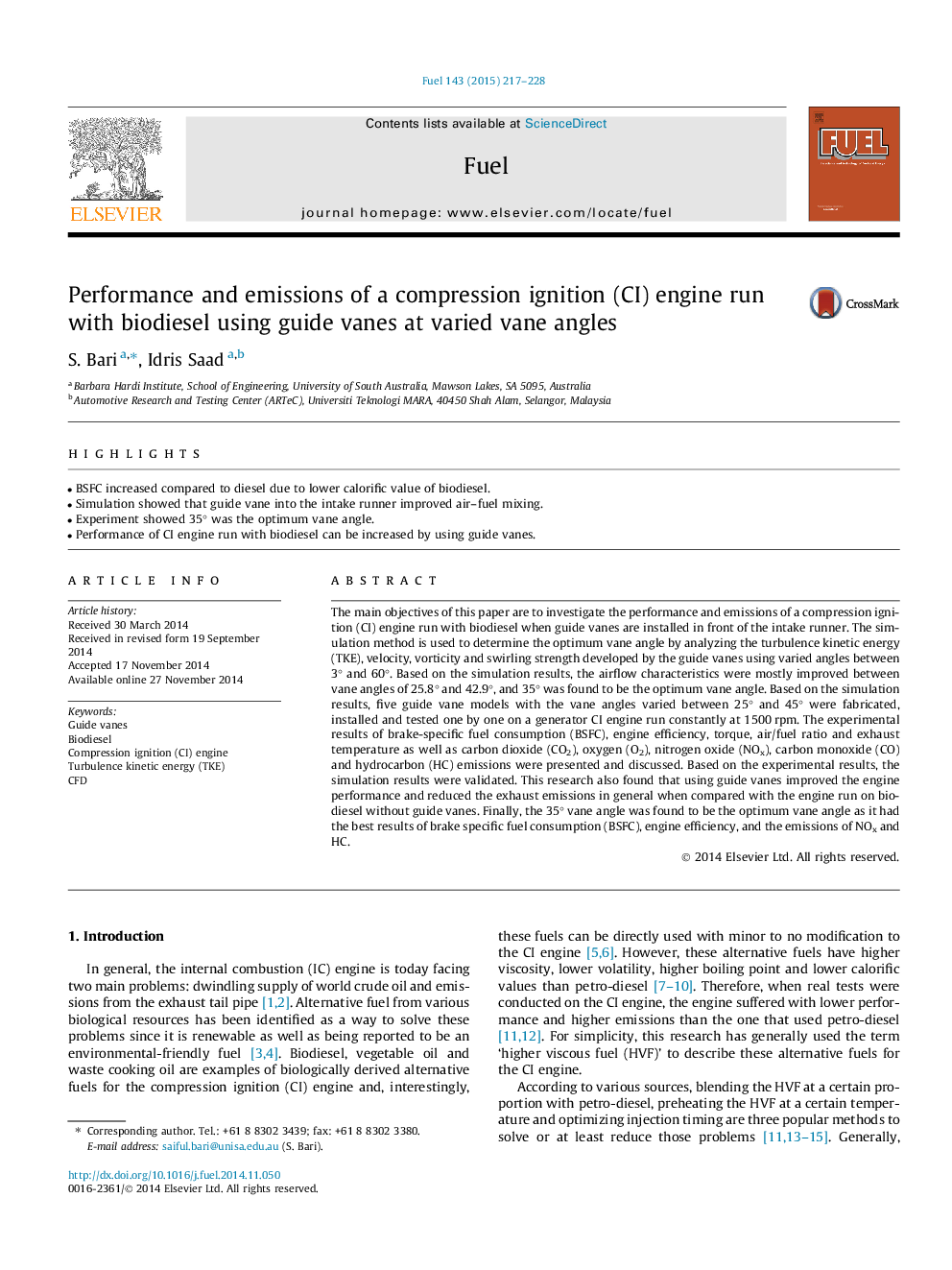| کد مقاله | کد نشریه | سال انتشار | مقاله انگلیسی | نسخه تمام متن |
|---|---|---|---|---|
| 6635787 | 461129 | 2015 | 12 صفحه PDF | دانلود رایگان |
عنوان انگلیسی مقاله ISI
Performance and emissions of a compression ignition (CI) engine run with biodiesel using guide vanes at varied vane angles
دانلود مقاله + سفارش ترجمه
دانلود مقاله ISI انگلیسی
رایگان برای ایرانیان
کلمات کلیدی
موضوعات مرتبط
مهندسی و علوم پایه
مهندسی شیمی
مهندسی شیمی (عمومی)
پیش نمایش صفحه اول مقاله

چکیده انگلیسی
The main objectives of this paper are to investigate the performance and emissions of a compression ignition (CI) engine run with biodiesel when guide vanes are installed in front of the intake runner. The simulation method is used to determine the optimum vane angle by analyzing the turbulence kinetic energy (TKE), velocity, vorticity and swirling strength developed by the guide vanes using varied angles between 3° and 60°. Based on the simulation results, the airflow characteristics were mostly improved between vane angles of 25.8° and 42.9°, and 35° was found to be the optimum vane angle. Based on the simulation results, five guide vane models with the vane angles varied between 25° and 45° were fabricated, installed and tested one by one on a generator CI engine run constantly at 1500 rpm. The experimental results of brake-specific fuel consumption (BSFC), engine efficiency, torque, air/fuel ratio and exhaust temperature as well as carbon dioxide (CO2), oxygen (O2), nitrogen oxide (NOx), carbon monoxide (CO) and hydrocarbon (HC) emissions were presented and discussed. Based on the experimental results, the simulation results were validated. This research also found that using guide vanes improved the engine performance and reduced the exhaust emissions in general when compared with the engine run on biodiesel without guide vanes. Finally, the 35° vane angle was found to be the optimum vane angle as it had the best results of brake specific fuel consumption (BSFC), engine efficiency, and the emissions of NOx and HC.
ناشر
Database: Elsevier - ScienceDirect (ساینس دایرکت)
Journal: Fuel - Volume 143, 1 March 2015, Pages 217-228
Journal: Fuel - Volume 143, 1 March 2015, Pages 217-228
نویسندگان
S. Bari, Idris Saad,